Proof China has been practising for years for a war that would spark mass global conflict
Experts agree the next major world conflict will be sparked by China, and its massive military began quietly training for it several years ago.

World
Don't miss out on the headlines from World. Followed categories will be added to My News.
Concealed within the grounds of a mammoth Chinese combat training camp lies a replica of a major city’s landmarks and infrastructure.
From above, it looks like any other functioning central business district, with major buildings dotting gridded streets near a huge highway interchange, just down from an international airport’s runway.
It took China just two years to construct the mock city, which bears undeniable similarities to Taipei, the capital of Taiwan.
Shortly after works were completed, a snippet of vision emerged showing the People’s Liberation Army (PLA) conducting a significant invasion drill.
As smoke from exploding bombs filled the fake city streets, troops dropped from choppers in a field run towards the presidential headquarters as tanks descend and anti-aircraft missiles aim at the sky.
SIGN UP TO NEWS.COM.AU’S NEW YOUTUBE CHANNEL
The drill was conducted in 2015, but the vision is no less chilling when viewed in a current context.
As tensions flare between Beijing and the West over China’s escalating activities near Taiwan and in its air space, experts fear a major conflict is inevitable – and imminent.
And as the invasion drills in the replica of Taipei show, the PLA is more than ready.
A strike from China would trigger a chain reaction of potentially bloody responses, with the United States and its allies – including Australia – drawn into defending Taiwan.
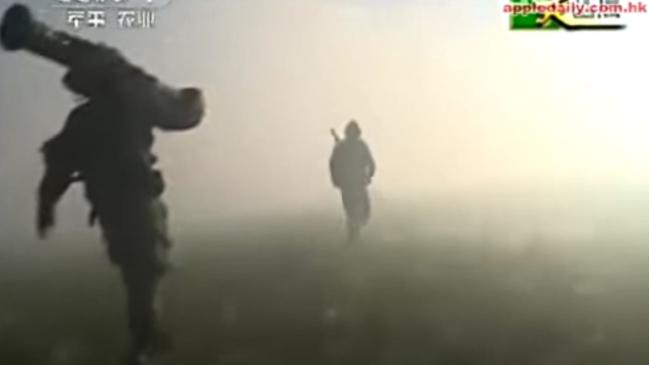
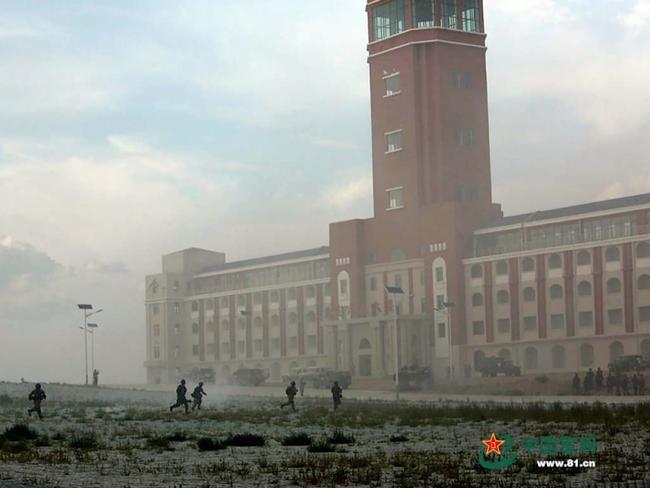
A sprawling training ground
Satellite images snooping on the Zhurihe combat training base in Inner Mongolia from late March 2013 to mid-March 2015 chronicled the construction of the mock Taipei.
A previously occupied patch of arid land within the 1000 square kilometre installation was rapidly transformed into a complex unlike any other, for exercises that analysts say were anything but routine.
The presidential headquarters is the most significant feature of the mock city.
While not an exact replica of the real thing in downtown Taipei, the many “similarities are striking”, reported The Diplomat.
“Both of the buildings have a bisected rectangle layout, are five stories high – with six stories at the corners – and have a central tower over the main entrance,” its report about the replica city said.
The mock building is a similar length and width, and only a few metres different in height, and both facades are styled with an alternating vertical white and red finish.
Across from the presidential HQ replica is an L-shaped structure with an adjoining green field that’s similar in proximity and layout to Taipei’s First Girls’ High School.
“Its sports field is the largest space near the Presidential Office Building that would be unencumbered by vehicles or trees if the PLA’s helicopters were seeking to land close to Taiwan’s seat of government,” The Diplomat noted.
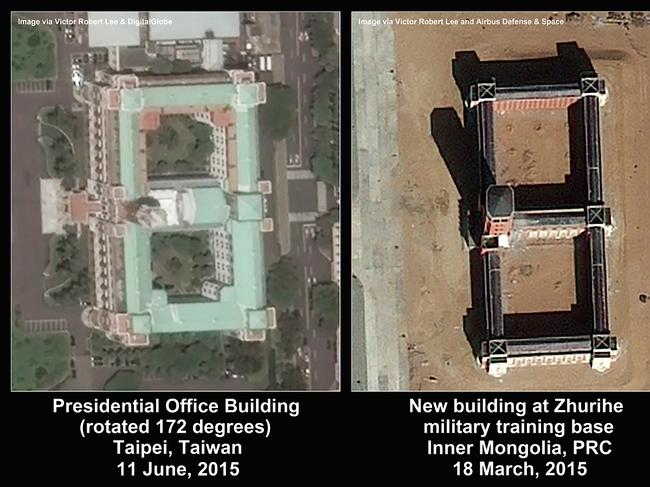
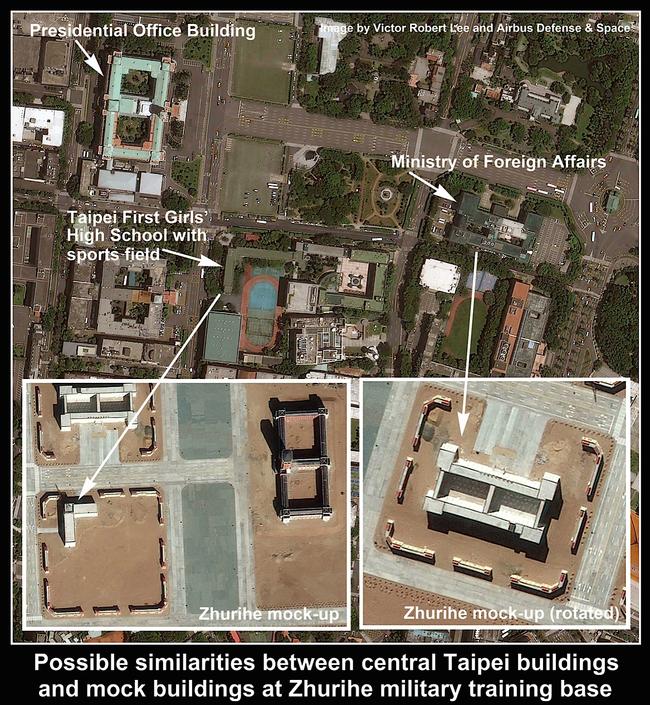
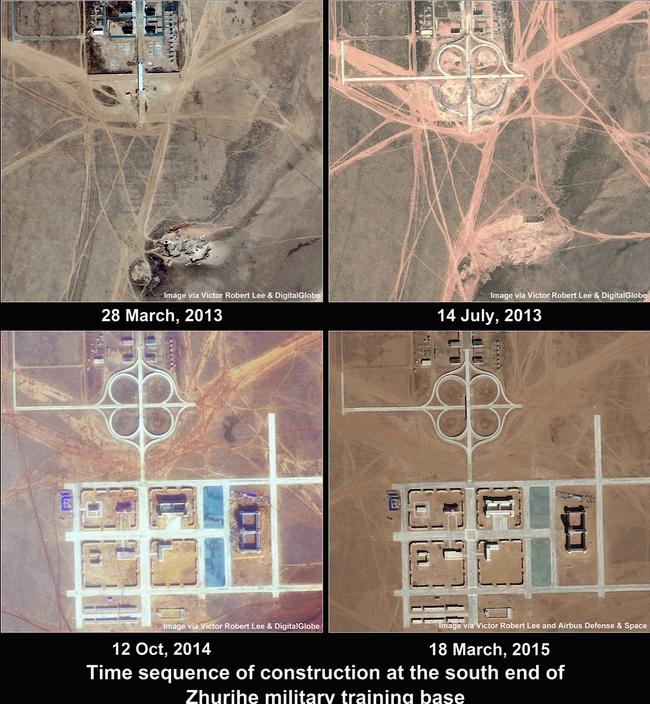
Just down from that is another building that looks remarkably similar to the Ministry of Foreign Affairs in Taipei.
These buildings all sit on city streets arranged in grid formation, in a similar style to central Taipei.
“Adjacent to the mock city grid at Zhurihe is a reproduction of a highway cloverleaf interchange, which would be relevant to military intervention in a modern urban locale,” it continued.
This replica roadway closely resembles one in western Taiwan, about eight kilometres southwest of Taichung airport.
And not far from there is a 1200-metre-long fake airport runway, marked with the headings 04, indicating 40 degrees, and 22, for 220 degrees.
“Although the heading numbers are placed at the wrong ends of the airstrip,” The Diplomat noted.
“In case the headings were not chosen at random – and since any headings could have been chosen for a mock airport – a search for relevant airports in the region with 04/22 headings was made, yielding Taiwan’s Taitung Air Force base … as well as the airport on the strategically located island of Miyakojima … where Japan announced it was installing anti-ship missiles in 2014.”
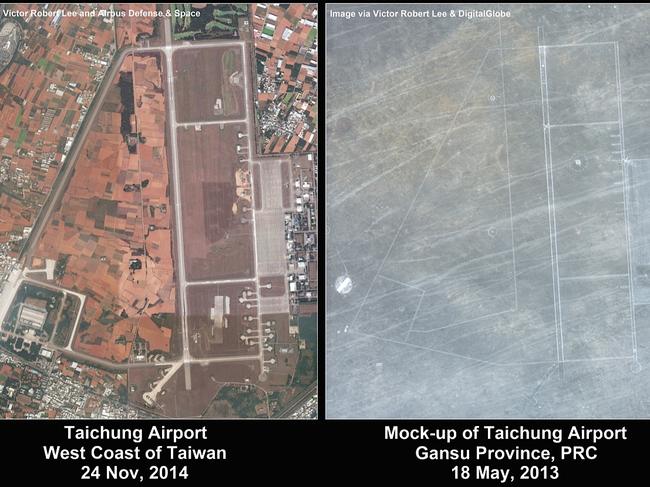
Back in 1999, China constructed a replica airport that strongly resembles the combined civilian and military airport in the city of Taichung.
But the construction of a mock Taipei and the staging of invasion drills marked a significant new step, The Diplomat reported.
Full-scale practice invasion
In mid-2015, Chinese state media broadcast a brief snippet of a PLA training exercise at the mock Taipei township.
It shows a significant military presence at the site, with troops flowing out of helicopters and taking to the streets, firing machine guns and storming the presidential headquarters.
A detailed still image of the invasion briefly appeared on Chinese websites but was quickly scrubbed.
Taiwan reacted with fury, with the country’s Defence Ministry calling the construction of the replica buildings and the training drill “absolutely unacceptable”.
Beijing rebutted the attack, saying it was a routine drill with no specific target … despite the optics.
The Diplomat reported that the drill was far from routine.
“The practice assault on an imitation Taiwan Presidential Office Building, only briefly revealed in images courtesy of the CCP government, may be seen as a propaganda signal to Taiwan …
“But the military drill at Zhurihe was more than propaganda. It was real, and it was a first. It had practical value for the PLA in training for an invasion of Taiwan.”
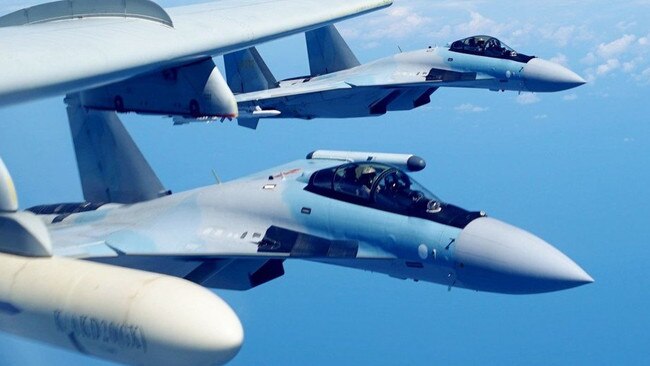
For the better part of three decades, the Taiwanese people have lived with Chinese military provocation and threats of forced reunification.
“In the run-up to Taiwan’s first direct presidential election in 1996, (the PLA) conducted massive missile tests in the waters near Taiwan, which strongly hinted at a possible invasion,” Wen-Ti Sung, a sessional lecturer at Australian National University, wrote for The Conversation.
“Since then, China has frequently staged military exercises around Taiwan, including flying military jets into the island’s vicinity.
“These are intended to underscore the risks of potential war and caution Taiwan against crossing Beijing’s ‘red lines’.”
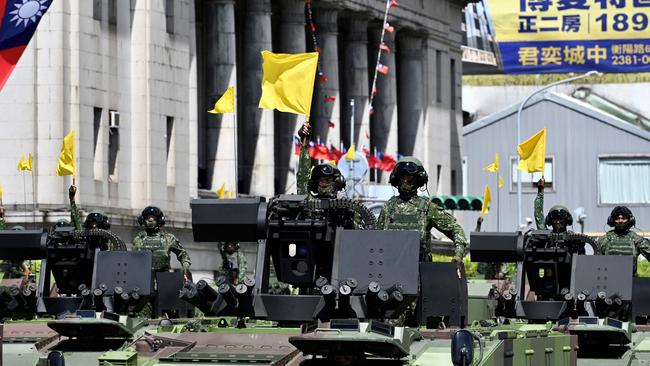
Recent escalation of tensions
China has spent the past few weeks flexing its aerial muscle with regular flights through Taiwanese airspace in defiance of warnings from Taipei and the United States.
In late September, in its strongest show of force in more than a year, two dozen military planes breached the Air Defence Identification Zone (ADIZ).
Beijing sending military aircraft into Taiwanese airspace isn’t an unusual occurrence, with breaches of the ADIZ happening on an almost daily basis.
But the scale of that flyover is significant.
Flight exercises have continued since then, raising concerns about its increasingly aggressive stance on Taiwan.
The country’s Foreign Minister Joseph Wu last week told the ABC that Taiwan was prepared for war.
“The defence of Taiwan is in our own hands, and we are absolutely committed to that,” Mr Wu said in an interview on the program China Tonight.
“If China is going to launch a war against Taiwan we will fight to the end, and that is our commitment.
“I‘m sure that if China is going to launch an attack against Taiwan, I think they are going to suffer tremendously as well.
Analysts say President Xi Jinping has backed himself into a corner when it comes to his push for the reunification of Taiwan.
“Xi has gone so far down the road of militarisation of the South China Sea and the promise of China greatness, China’s rise to hegemony in the Indo-Pacific, and essentially the recovery of Taiwan, that he can’t seriously moderate … without falling from power or risking it,” Larry Diamond, a senior fellow at the Hoover Institution, told CNBC.
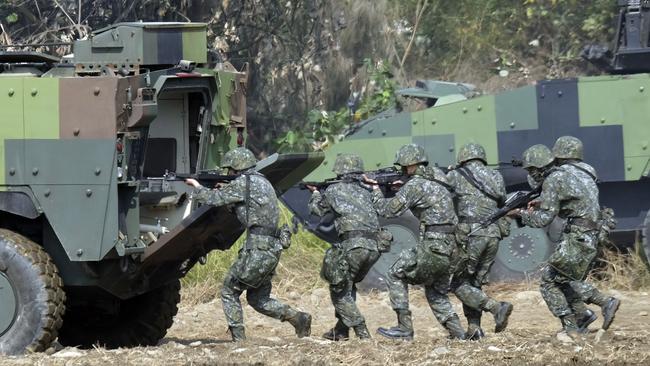
Beijing’s bolshie approach has been met with resistance, as the era of diplomacy for the sake of economic ties appears to be coming to an end.
That is especially the case with Australia, long a quiet and agreeable partner.
“Australia’s push-back [to a trade war] surprised China,” Duy Trinh from Princeton University’s Niehaus Centre for Globalisation and Governance told CNBC.
“So did India’s assertiveness at the border. I think it speaks to … some elements of the Chinese Communist Party that their hawkish stance in recent years has been challenged, and quite resolutely challenged, by other countries. It’s not something they can just do for free.”
Originally published as Proof China has been practising for years for a war that would spark mass global conflict





